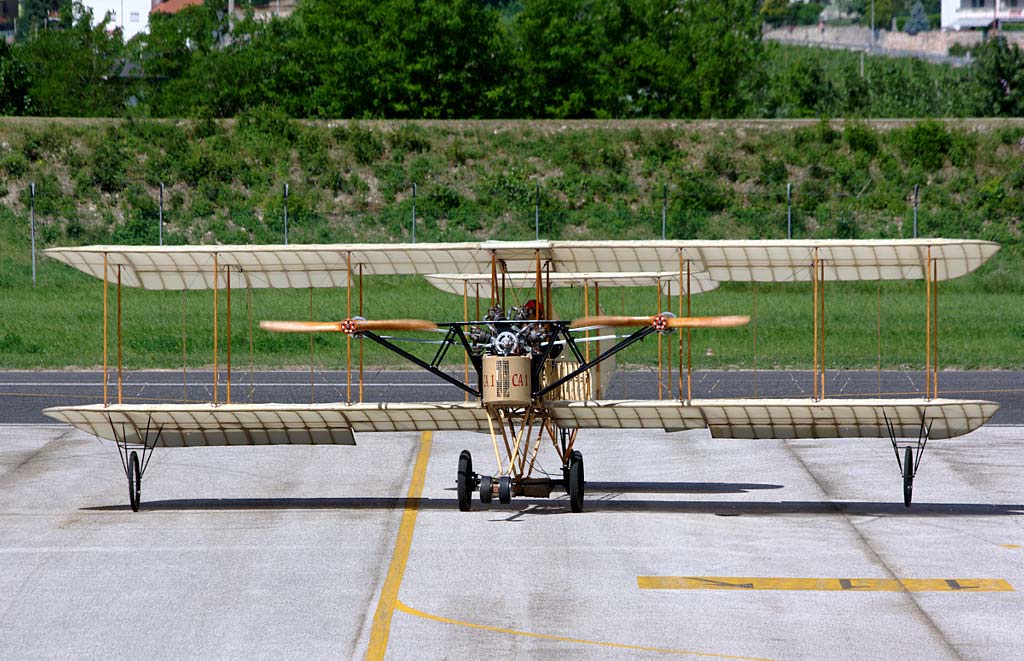Discover the robust Caproni Ca.1 heavy biplane bomber of 1915, its history, design, performance, and military legacy in World War I.
This in-depth article explores the history, design, performance, and military usage of the Caproni Ca.1, a formidable heavy biplane bomber from 1915 that played a significant role during World War I. The Caproni Ca.1 emerged during a critical era in aviation history, driven by the demands of World War I. This article delves into the aircraft’s development, the imperative behind its creation, its launch, and its relevance within the historical context. Additionally, we’ll uncover whether the aircraft had a NATO nickname.
History of the Development of the Caproni Ca.1
As World War I escalated, the need for heavy bombers capable of striking deep into enemy territory became evident. In response, the Italian aviation pioneer, Giovanni Battista Caproni, initiated the development of the Caproni Ca.1 heavy biplane bomber.
The program commenced in 1914, driven by the desire to provide Italy with a strategic bombing capability. The Caproni Ca.1 took to the skies for the first time in 1915.
Design of the Caproni Ca.1
The Caproni Ca.1 was a massive biplane bomber with a wingspan of 22 meters (72 feet) and a length of 12 meters (39 feet). It featured a crew of four and was powered by three engines, typically Isotta Fraschini V.4B 100-horsepower engines.
This formidable aircraft was capable of carrying up to 800 kilograms (1,764 pounds) of bombs. Its advantage lay in its payload capacity and the ability to strike deep into enemy territory. However, its large size made it vulnerable to enemy fighters.

Performance of the Caproni Ca.1
The Caproni Ca.1 was a powerful heavy bomber for its time. It was equipped with three Isotta Fraschini V.4B engines, each providing 100 horsepower. This power allowed it to achieve a maximum speed of around 100 km/h (62 mph) and reach an altitude of up to 3,000 meters (9,843 feet). Its range was approximately 400 kilometers (248 miles).
In comparison to other bombers of the era, such as the German Gotha G.IV and the British Handley Page O/100, the Caproni Ca.1 held its own, thanks to its impressive payload capacity and range.
Military Use and Combat of the Caproni Ca.1
The Caproni Ca.1 served as a key element of the Italian air force during World War I. Its primary role was strategic bombing, targeting enemy industrial centers, military installations, and transportation hubs. The aircraft carried a substantial bomb load, making it a formidable weapon.
The Caproni Ca.1 saw action in various theaters of the war, including the Italian Front. It participated in operations such as the bombing of Vienna, demonstrating its capability to strike deep into enemy territory.
While it was not sold to other countries, the Caproni Ca.1 made a significant impact during World War I. As aviation technology evolved, it was eventually replaced by more advanced bomber aircraft.
The Caproni Ca.1 heavy biplane bomber played a crucial role during World War I, serving as a powerful strategic weapon capable of striking deep into enemy territory. Its impressive payload capacity and range made it a formidable asset in the early days of military aviation. Although no longer in use, it remains a symbol of innovation and effectiveness during a critical period in aviation history.
Back to the Bombers section.